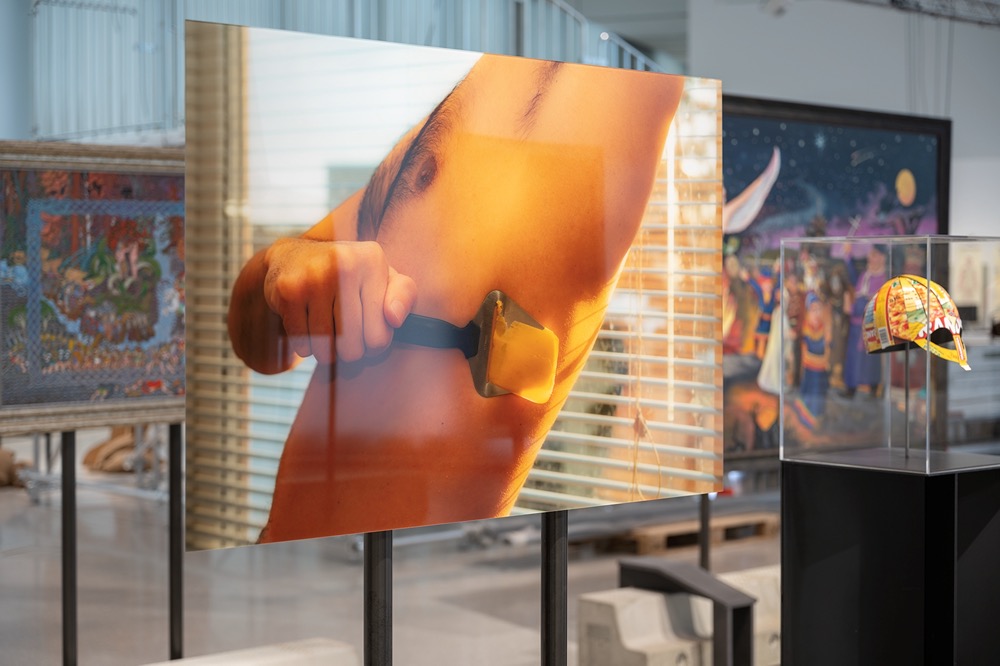Brunost
Sayed Sattar Hasan
Transkripsjon
Sayed Sattar Hasan:
My name is Sayed Sattar Hasan and I’m a visual artist, and I’m showing the works Brunost and The Grandiosa Vikinghjelm.
I was learning about Norwegian culture, I had brunost in the fridge, and this scene, it was made in my kitchen, there was no studio lights, but I think I was having some brunost, then I was in the kitchen and the light was glowing and maybe in the back of my mind I had been thinking about the comparison of my own skin colour with brunost.
You know, I do think about identity a lot.
Doing that in a domestic space and kind of thinking about my place in Norway, where do I belong in Norway?
Talking about it through racial experience, there is an aspect of my life and my history, where unfortunately people have questioned where I'm from, and also questioned why you’re there, you know, when you experience racism, this isn´t your home, this isn´t your country, you don´t belong here, go back home, in a space where it is your home, which is, which is confusing.
But I think at the same time, I think there is this sense of empowerment with the image, it’s taken control, it’s claiming brunost in a way, it’s like the brunost will be mine, I won’t be processed in the same way. I will use this, I will take it and I can even be, ha-ha, I can even be the brunost, you know, so, with the Grandiosa Vikinghjelm, it’s something which shows the diversity the cultural objects hold, and I think this again relates to maybe certain aspects of Brunost.
I think we want to relate to culture in the places we live, and I think, if this image of any country, not just Norway, is just frozen in a way where you can’t, you can’t change it and we just continually celebrate the same old objects without any possibilities for reinvention. How do the younger generations relate to that, how do they access that, because, in a way, we want to have a little ownership on our culture, we don't want to feel excluded from our culture.